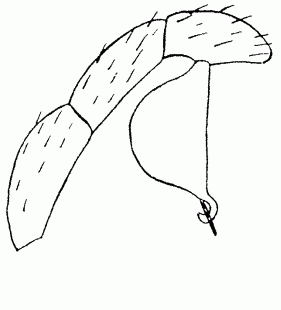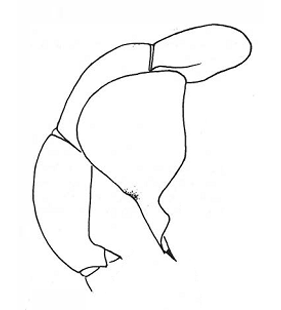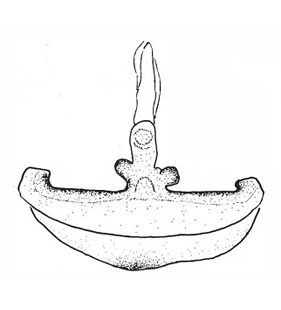Harpactea serena (Simon, 1907)
Description
Male
Palp: tarsus as large as tibia, bulb almost as wide as long.
Female
Prosoma light reddish. Sternum yellowish, with fine grains. Legs yellowish, femur I usually with 2 spines, femur II with a row of 2 or 3 spines, femur III with 3 to 7 spines, femur IV with 3 to 5 spines.
Body length female: 5-6 mmAdditional information
In calcareous areas, holm oak forests, vineyards.
Distribution
Phenology
| Jan | Feb | Mar | Apr | May | Jun | Jul | Aug | Sep | Oct | Nov | Dec |
 |  |
Figures
Distribution List
"No references" does not mean that the species does not occur in this country, but that we have not yet inserted the reference for it. We are working on it.
References
Branco V V, Morano E, Cardoso P (2019) An update to the Iberian spider checklist (Araneae). Zootaxa 4614: 201-254 ![]()
Ferrández M A, Fernández de C H (1990) Nuevos datos sobre las especies ibéricas del género Harpactea Bristowe, 1939 (Araneae, Dysderidae). Boletín de la Real Sociedad Española de Historia Natural (Seccion Biologica) 86: 39-53 ![]()
Le Peru B (2011) The spiders of Europe, a synthesis of data: Volume 1 Atypidae to Theridiidae. Mémoires de la Société Linnéenne de Lyon 2: 1-522 ![]()
Pantini P, Isaia M (2019) Araneae.it: the online catalog of Italian spiders, with addenda on other arachnid orders occurring in Italy (Arachnida: Araneae, Opiliones, Palpigradi, Pseudoscorpionida, Scorpiones, Solifugae). Fragmenta Entomologica 51: 127-152 ![]()
Simon E (1914) Les arachnides de France 6 (1). Paris (Roret): 1-308 ![]()
WSC (2025) World Spider Catalog. Version 26. Natural History Museum Bern, online at http://wsc.nmbe.ch (28.2.2025) doi: 10.24436/2 ![]()
Updates
| 09-12-2015 | Image insert |


